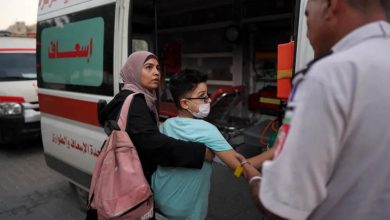Bangladesh becomes first country to eliminate Kala-azar: WHO

NEW DELHI: Bangladesh has become the first country in the world to be able to eliminate kala-azar, a neglected tropical disease that affects the poor, the World Health Organization announced on Tuesday.
Bangladesh achieved the elimination target of less than one case per 10,000 population at the sub-district (upazila) level in 2017 and has sustained it to date despite disruptions caused by the COVID-19 pandemic, according to a statement issued by the World Health Body.
The WHO has also announced the interruption of leprosy transmission by Maldives and the elimination of rubella by South Korea. Maldives is the first country to verify the interruption of transmission of leprosy, having achieved the milestone of no child case detection for more than five consecutive years.
In 2019, Maldives published a ‘Framework for Zero leprosy’ with clear milestones to reach leprosy elimination by 2030.
An independent assessment team by WHO highlighted high political will and community motivation, along with strong health systems and minimal evidence of stigma and discrimination towards persons affected by leprosy, as the key factors for Maldives’ success.
The WHO South-East Asia Regional Verification Commission for Measles and Rubella Elimination, at its extended eighth meeting held virtually on October 3, based on the evidence provided by the National Verification Committee of the Democratic People’s Republic of Korea, concluded that endemic rubella virus has been eliminated from the country.
South Korea introduced the measles-rubella vaccine in childhood immunization programme in November 2019 after successfully carrying out a wide age range immunization campaign targeting 9 months to 15 years old children and 16 to 18 years old women with measles and rubella vaccines. Through this mass immunization activity, achieving more than 99.8% coverage in almost 6 million target population, the country rapidly built substantial population immunity for rubella.
WHO SEARO Regional Director Dr Poonam Khetrapal Singh felicitated Bangladesh, Maldives and South Korea for these public health achievements, at the ongoing Seventy-sixth Regional Committee Session.
She also felicitated Bangladesh for the elimination of lymphatic filariasis as a public health problem, and Bhutan and Timor-Leste for eliminating rubella, these successes were achieved earlier this year.
“Neglected tropical diseases like lymphatic filariasis, visceral leishmaniasis and leprosy, along with the threat to children and young people posed by rubella, require continued national leadership, commitment and collaborative action by countries and health partners worldwide,” said WHO Director-General Dr Tedros Adhanom Ghebreyesus.
“I salute the great progress made, in line with WHO guidance, by Bangladesh and Maldives on protecting their populations from such NTDs, and from Bhutan, DPR Korea and Timor-Leste for their work to eliminate rubella as a public health threat. These achievements will positively impact the lives of the most vulnerable populations now and in the future,” she said.
Elimination of neglected tropical diseases and childhood killer and debilitating diseases measles and rubella have been among the eight flagship priority programmes of the WHO South-East Asia Region since 2014.
With WHO and Member countries focusing on the flagships, which are in sync with SDG targets and WHO global priorities, the Region has been witnessing significant advances. Five of the 11 Member countries – Bhutan, DPR Korea, Maldives, Sri Lanka and Timor-Leste- have achieved the regional target of measles and rubella elimination.
Among neglected tropical diseases, the Region has been focusing on trachoma, lymphatic filariasis, visceral leishmaniasis/kala-azar, yaws, and leprosy. Four countries – Maldives, Sri Lanka, Thailand, and Bangladesh – have eliminated lymphatic filariasis. Nepal and Myanmar have eliminated trachoma, and India has been verified as yaws-free.
Like many neglected tropical diseases, the WHO South-East Asia Region historically accounted for the substantial disease burden of Kala-Azar with Bangladesh, India, and Nepal accounting for 70% of the global cases between 2004 and 2008.
The three countries and WHO signed an MoU in 2005 launching the Regional Kala-Azar Elimination Initiative. The MoU was renewed in 2014 with the inclusion of Bhutan and Thailand.
Since 2005 Member countries and WHO have been making concerted efforts to strengthen case management, integrated vector management, effective disease surveillance, social mobilization and operational research, as part of the first Regional Strategic Framework for Elimination of Kala-azar in the South-East Asia Region.
The Region has witnessed a 95% decline in new cases of Kala Azar in the last 10 years. By 2022, only one per cent of the implementation units (areas being focused upon with Kala Azar elimination efforts) were left t





